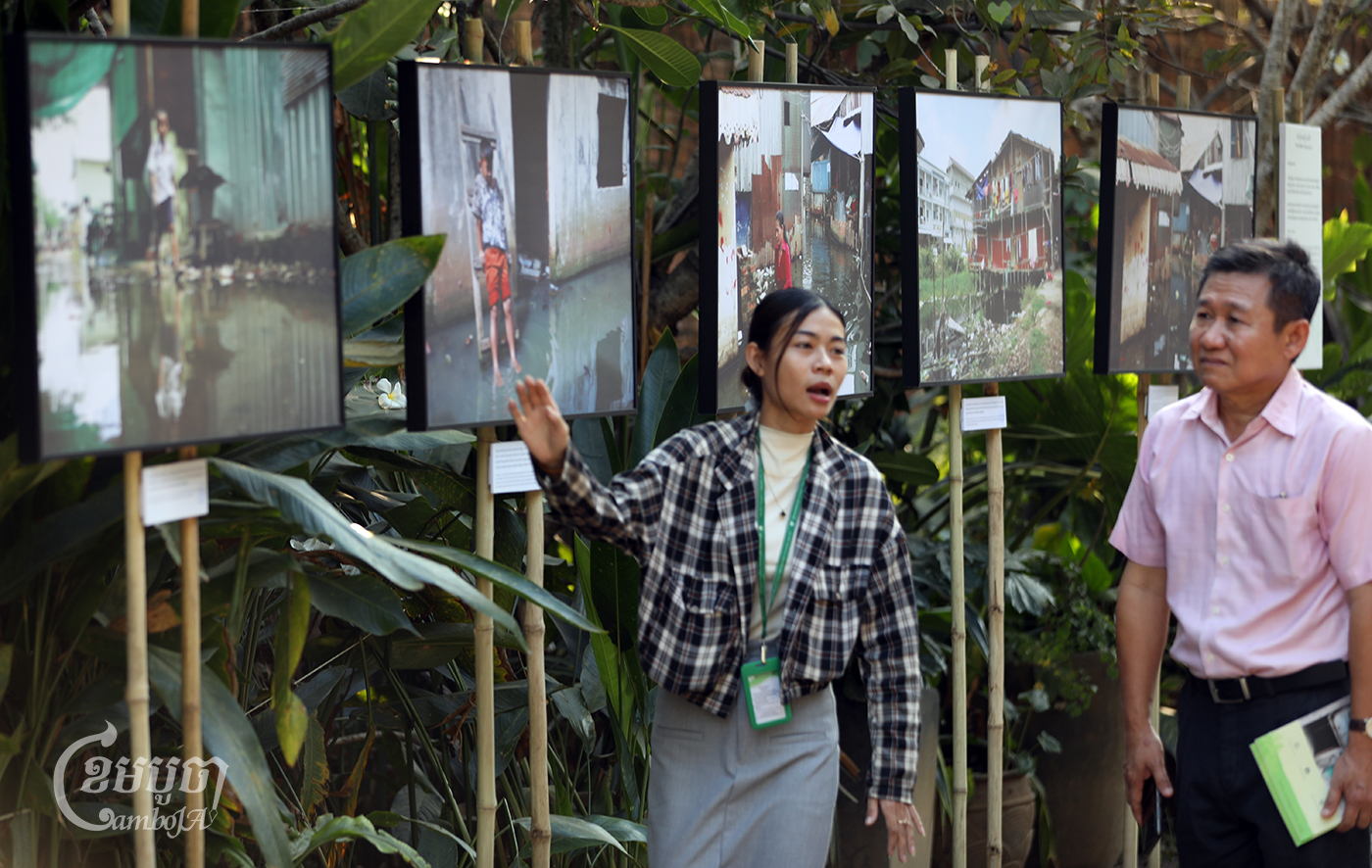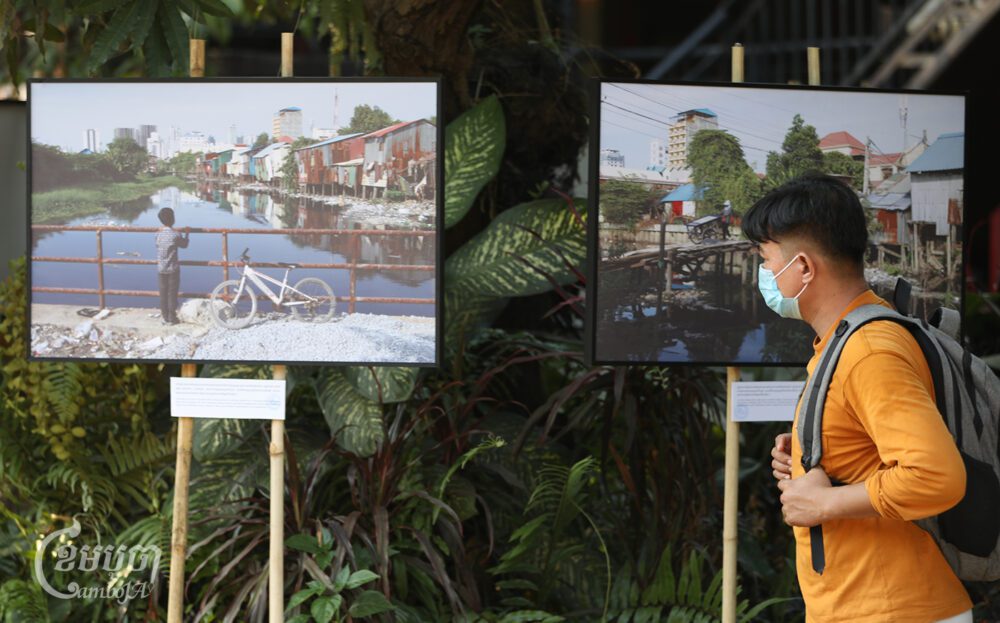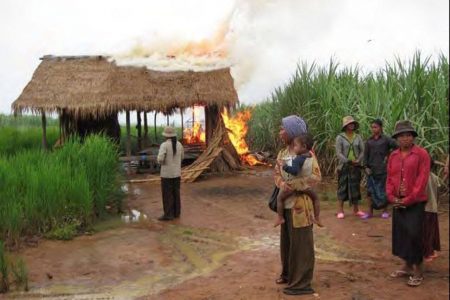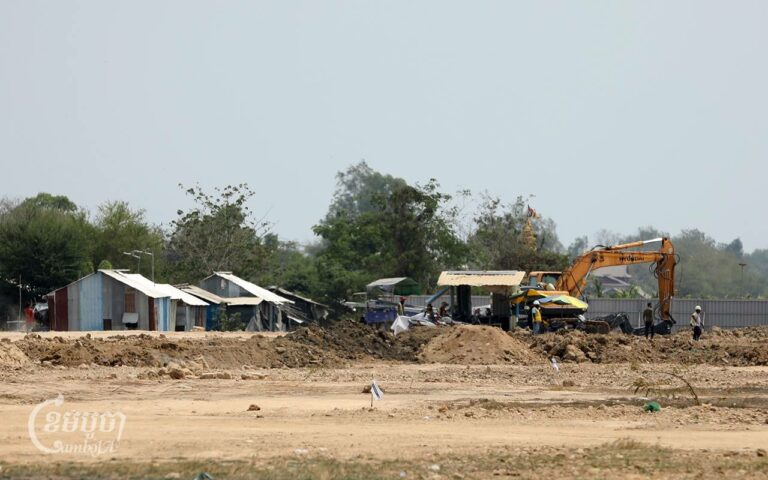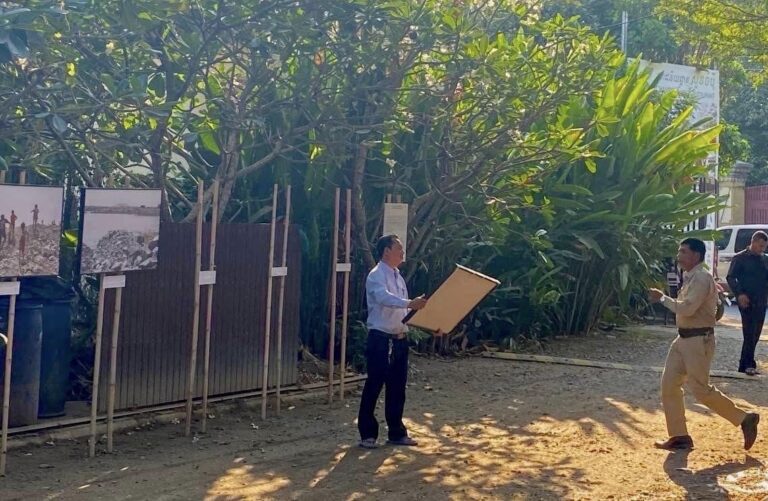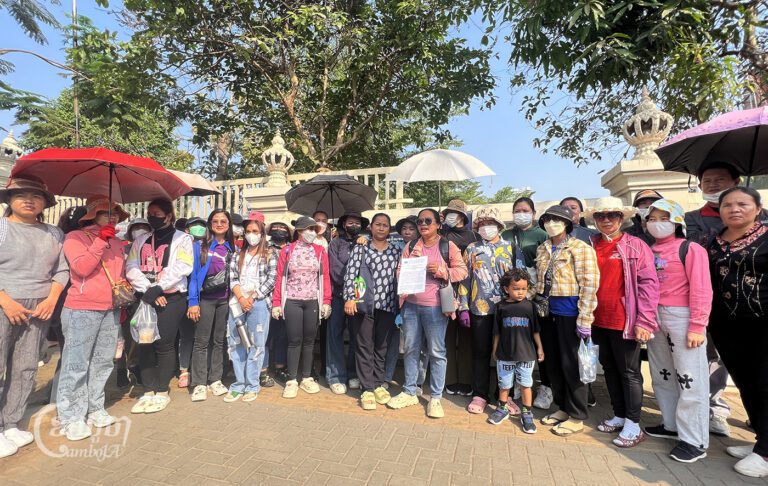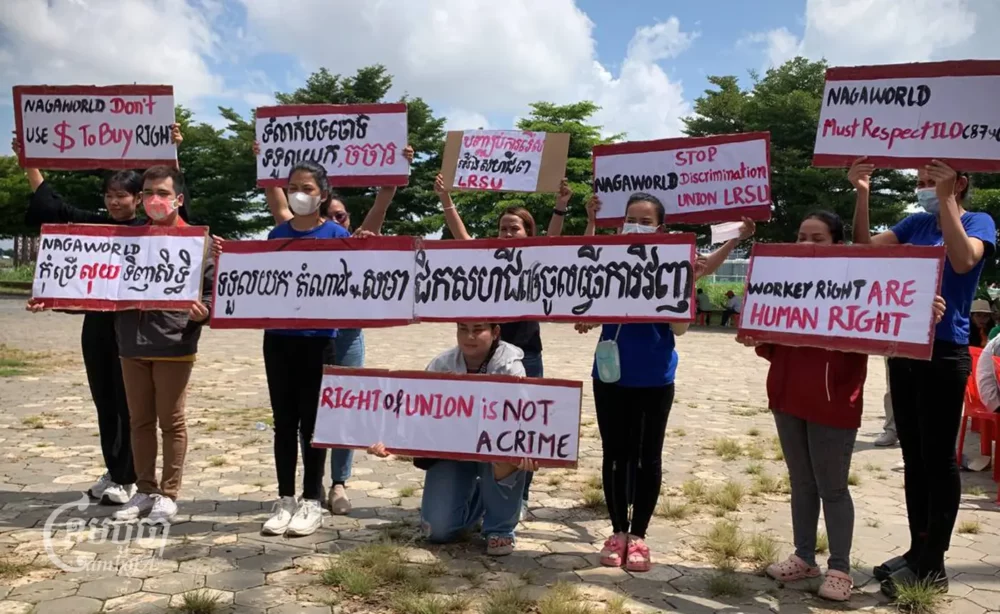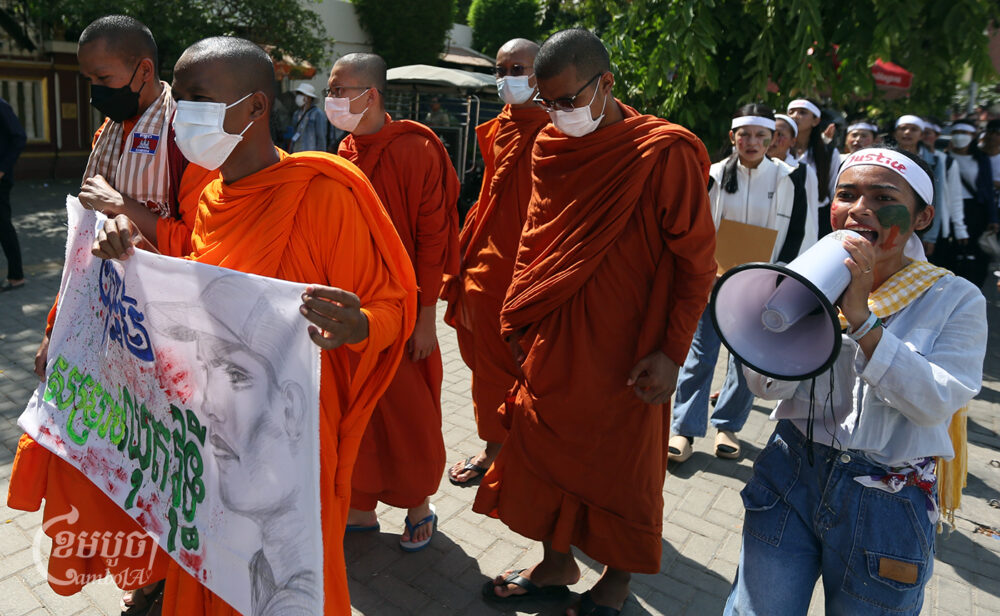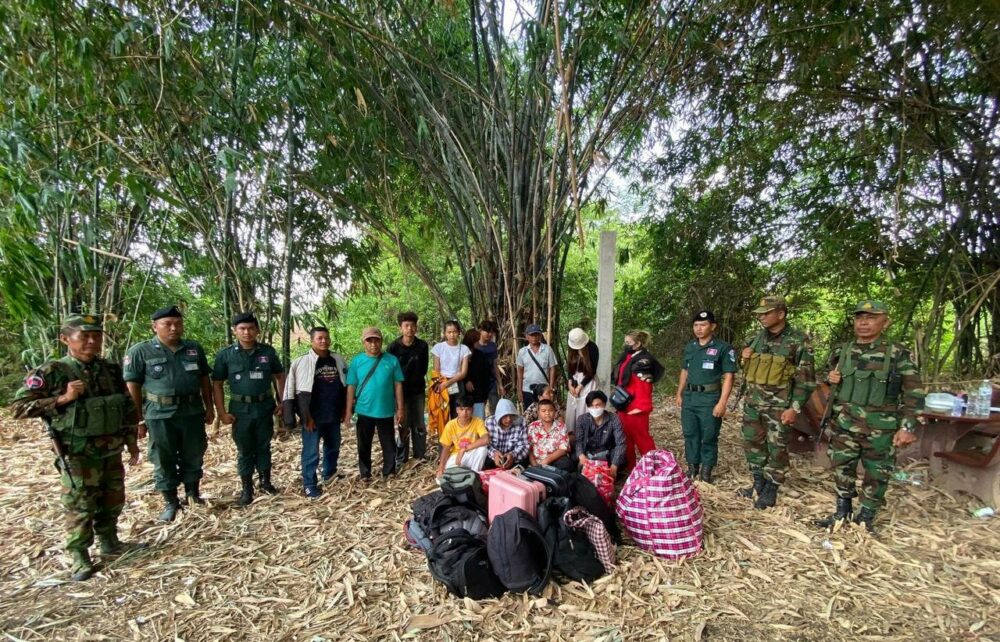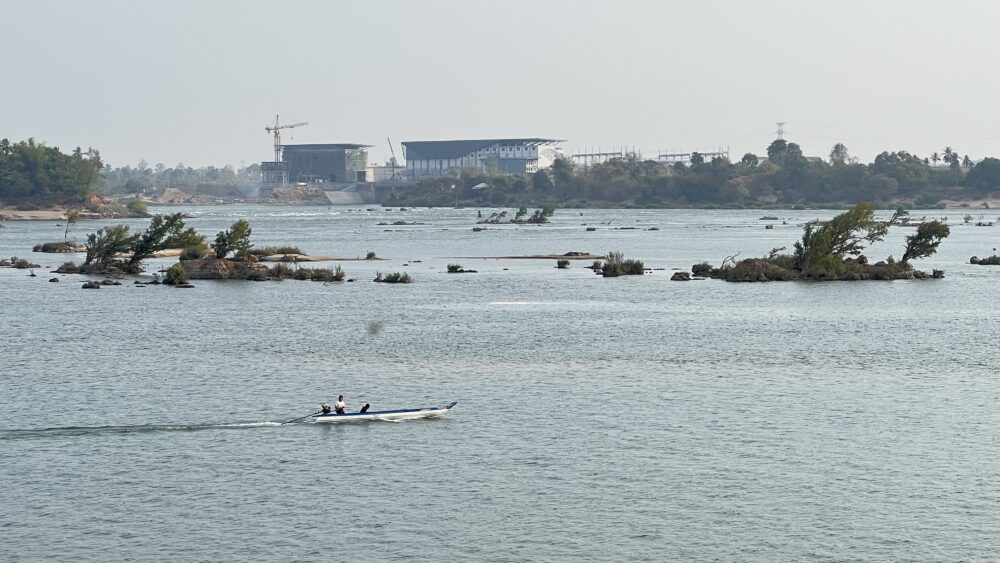Sahmakum Teang Tnaut (STT)’s free photo exhibition showcased 60 photos on the life of urban poor communities including land insecurity, resettlement, lack of pre-arranged services and infrastructure, and forced evictions. It also sheds light on the present condition of city lakes and the environmental impact due to the destruction of lakes in Phnom Penh by companies, private sectors, and public figures, according to the organization.
The 10-day exhibition themed “Home and Life” from February 23 to March 4 at Champei Garden Restaurant aims to create awareness to the public, and enable stakeholders, including urban poor communities and the government, to work together to find solutions and promote the right to affordable housing.
In his welcome remark on the afternoon of February 23, STT executive director Soeung Saran thanked their partners for supporting the exhibition, which took six months to prepare and over a year from 2022 to collect the photos.
“The purpose of the exhibition is to highlight the issues of the communities we work with and how they lack land security and access to comfortable living spaces which is the general environment of the communities.”
Around 60 participants including community representatives, international organizations and other stakeholders joined the exhibition on the opening day. The exhibition also provided a platform for community representatives to express their thoughts.
Stung Kambot community representative Horn Bros attended the exhibition as he wanted to learn more about the problems of other communities and share his experience, as well as find solutions.
“The event is important for me because the photos tell a real story which is happening in our society.”
He believes that events like these provide the opportunity for representatives of different communities to speak about their challenges and put forward their requests as NGOs, national and international organizations, and journalists are among the participants.
“Once the article or report is published, I hope the new prime minister and other stakeholders are informed and will provide a solution for us,” said Bros, who represents an urban poor community in Lor Kam Bour village, Svay Pak commune of Russey Keo district in the capital city.
The community, which has been there since 1979, consists of 210 households, 244 families, or 847 community members in total, with 437 of them women, according to the STT report.
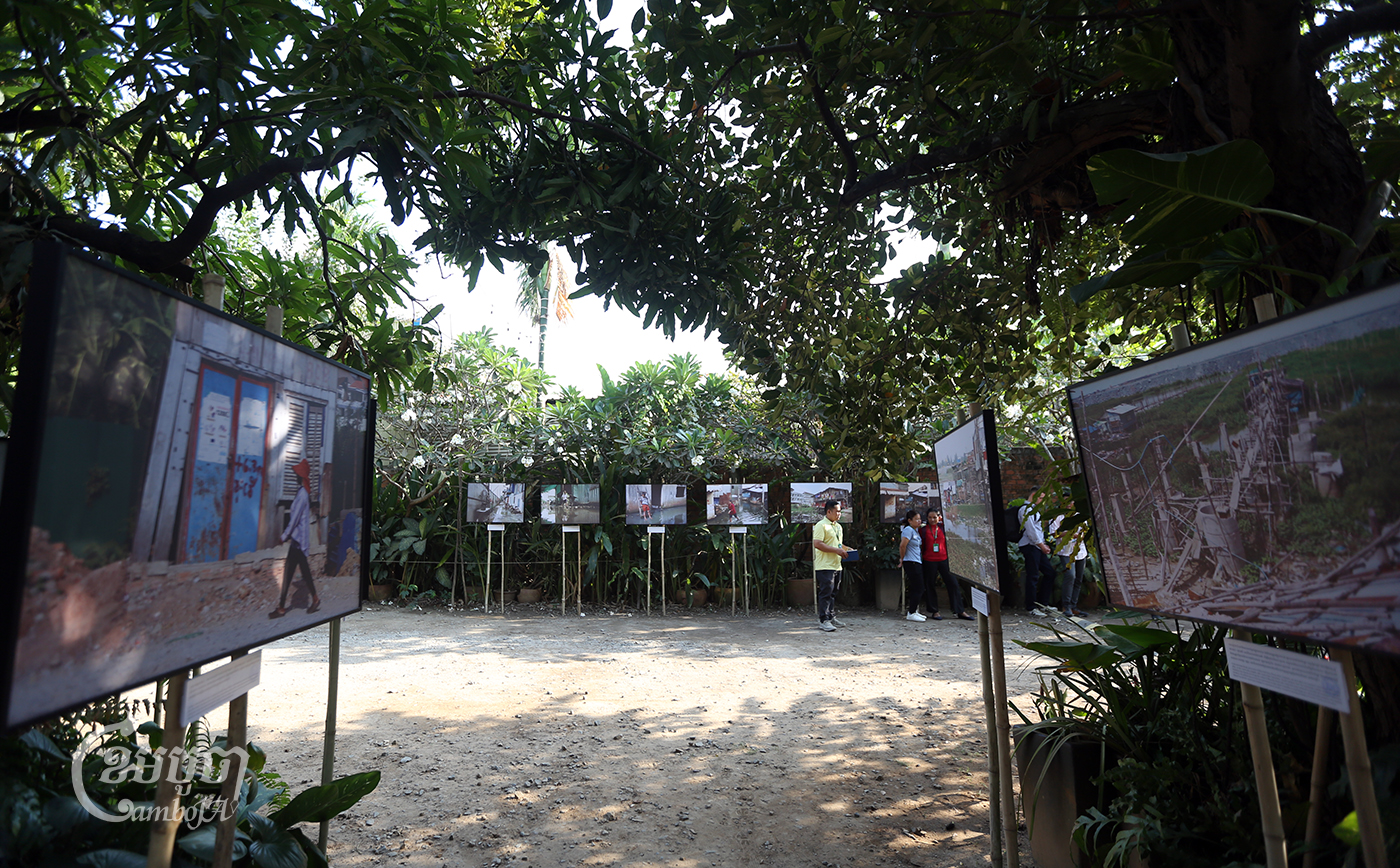
Another participant at the exhibition was Tim Sreymoch, representative of Andong Ta Eang Community, which is located in Prek Thmey Village I, Prek Thmey commune, Chbar Ampov district. She came to gain knowledge relating to land rights, so that she can share with her neighbors in order to protect themselves as they have not obtained their land titles.
“There are 50 families. We have been living here for more than 20 years, but we continue to fear forced evictions.” Although there is no indication or threats relating to evictions, her community remains worried.
“I’m worried that it will happen in the future. If we do not have a proper land title, we will experience evictions like other communities,” said Sreymoch.
In response, government spokesperson Pen Bona said the government has led the country to the highest level of development in “more than 500 years”. He said Phnom Penh turned from a city which had “nothing” to a beautiful city, and is “not inferior to other developed countries”.
“The development of the country follows a win-win policy, that is, for the benefit of everyone. Phnom Penh has been transformed into a modern city full of vibrant economic activities,” he said. People who lived in untidy buildings, cramped or unsanitary conditions now live in places that are spacious with all kinds of amenities.
“Some of the locations that used to be suburbs have now become the center of the city. Land prices have risen,” he said.
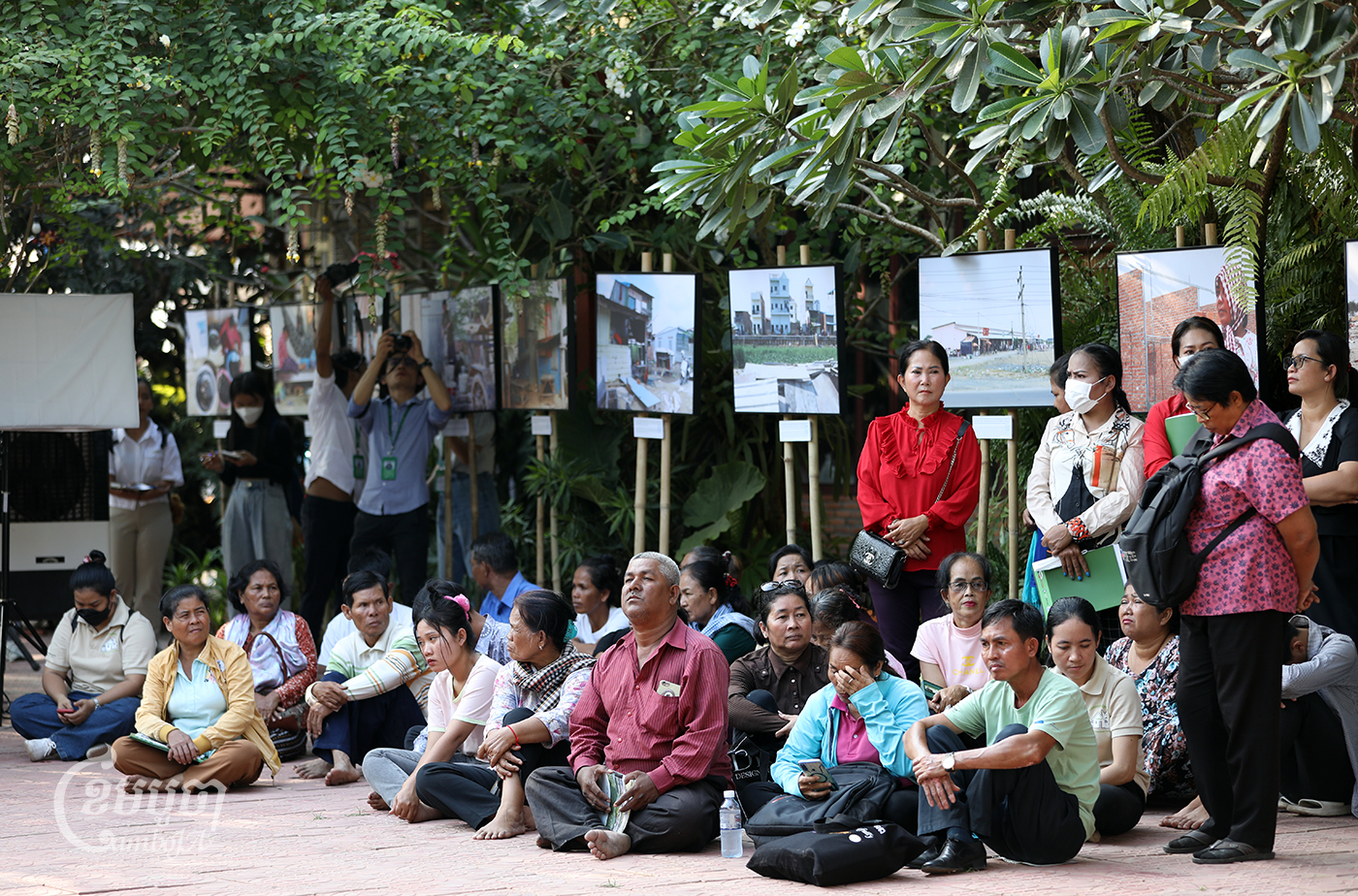
Commenting on the people’s request, Bona said the Ministry of Land Management, Urban Planning and Construction has been actively measuring lands and distributing title deeds to people. The National Authority for Land Dispute Resolution also strives to resolve disputes for citizens everywhere.
“Land disputes have been resolved almost completely […] at the lowest level in history. This is a win-win policy for the development of the country,” he said.
Bona also mentioned that the government is moving towards achieving Vision 2050, when Cambodia becomes a high-income country.
Meanwhile, Sorn Ratana, a third-year university student in Phnom Penh, said the exhibition gave her an in-depth understanding on the impact of the citizens and their environment.
“In such exhibitions, we become more aware of the problems of Cambodian people who suffer after losing their homes and having to move to a new place. It also made me realize that covering up the lakes in Phnom Penh has caused the city to flood and affect the people,” said Ratana.
As a young Cambodian, she would like to see the government’s involvement in addressing the issues relating to land rights and decent housing and for an end to forced evictions.
